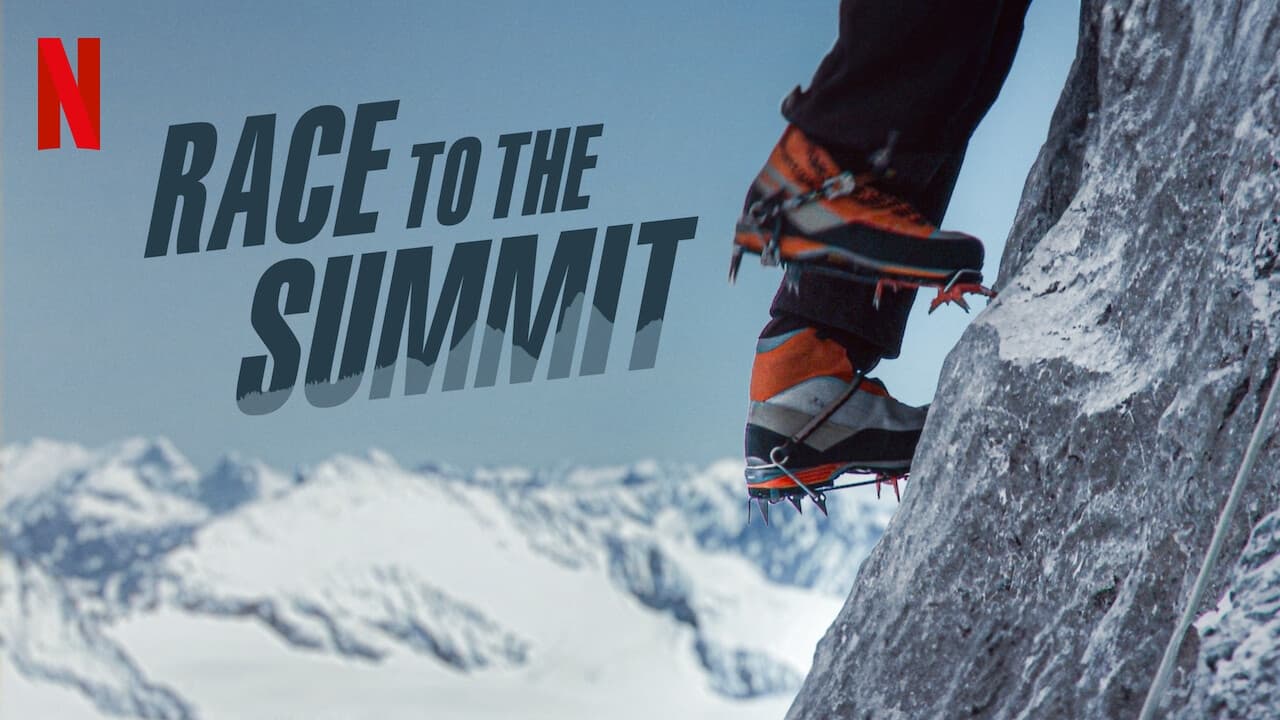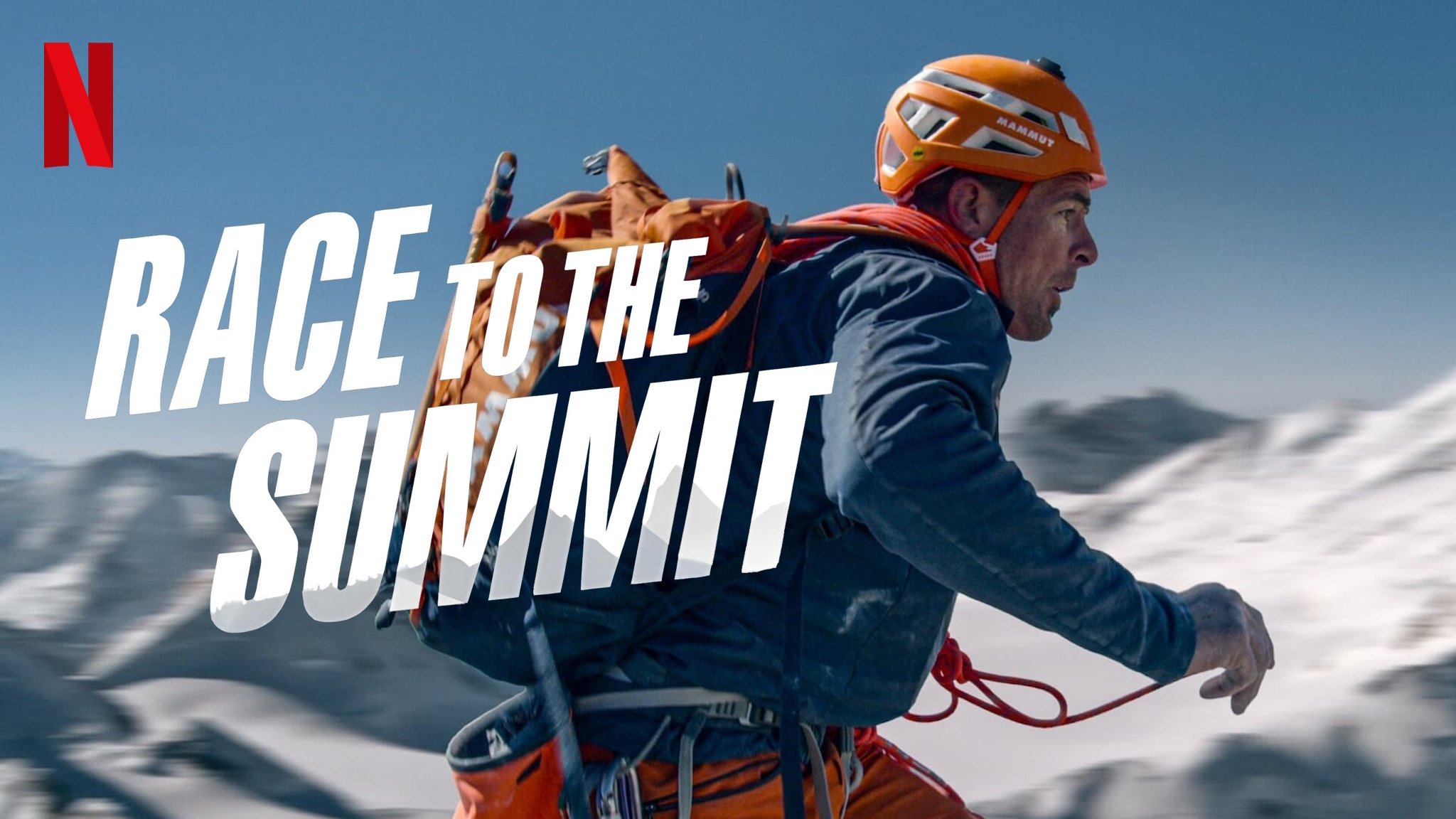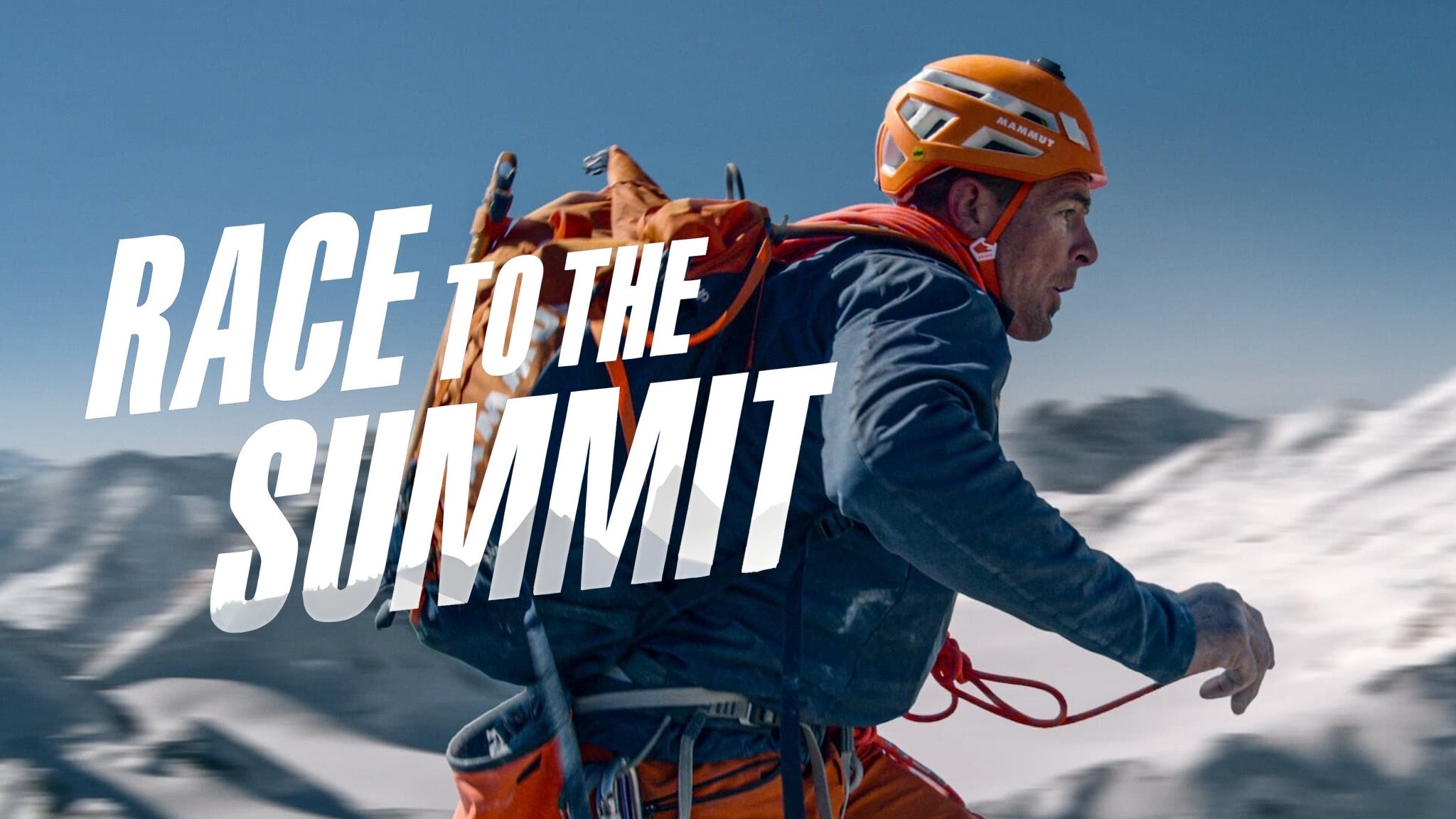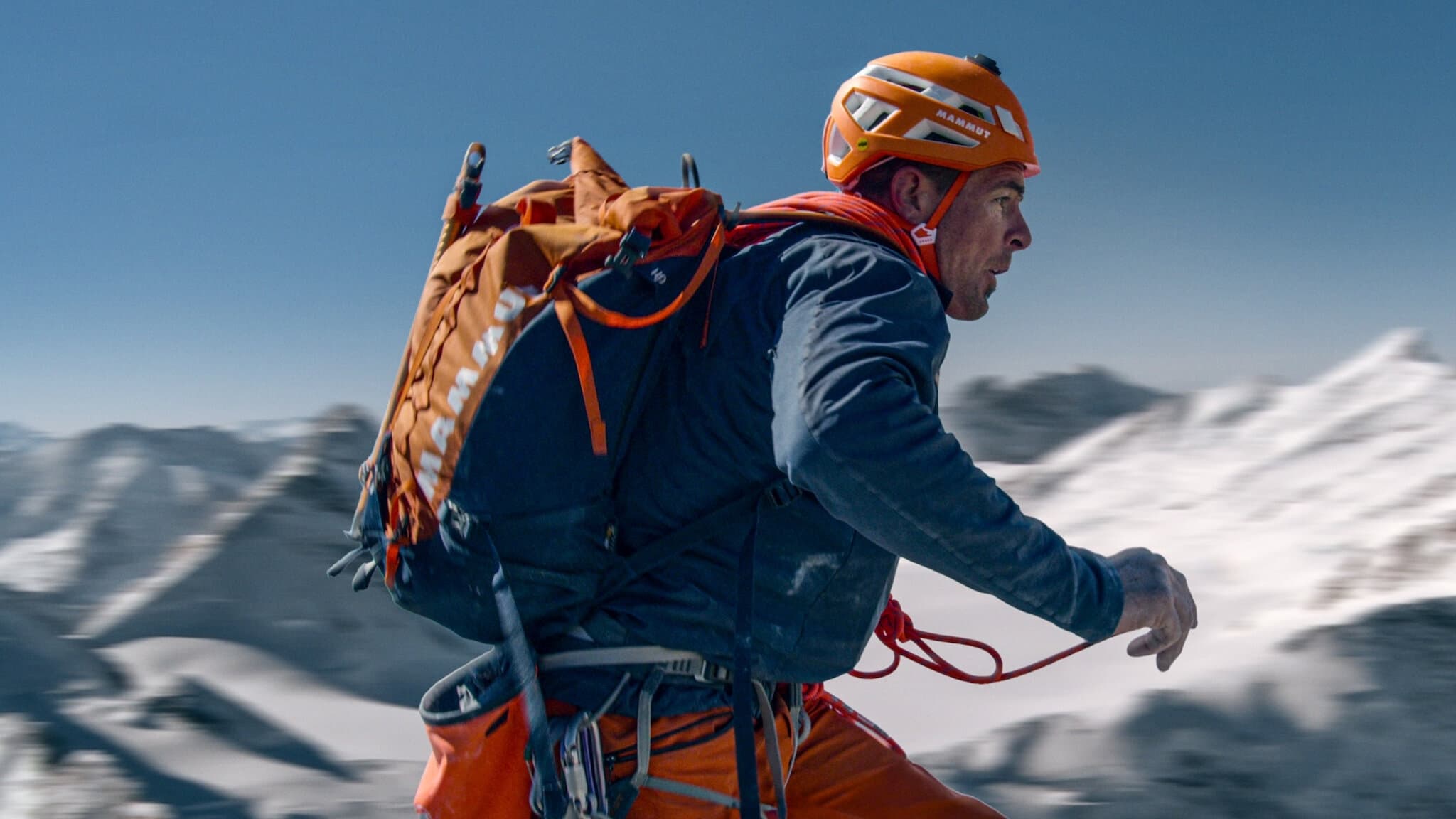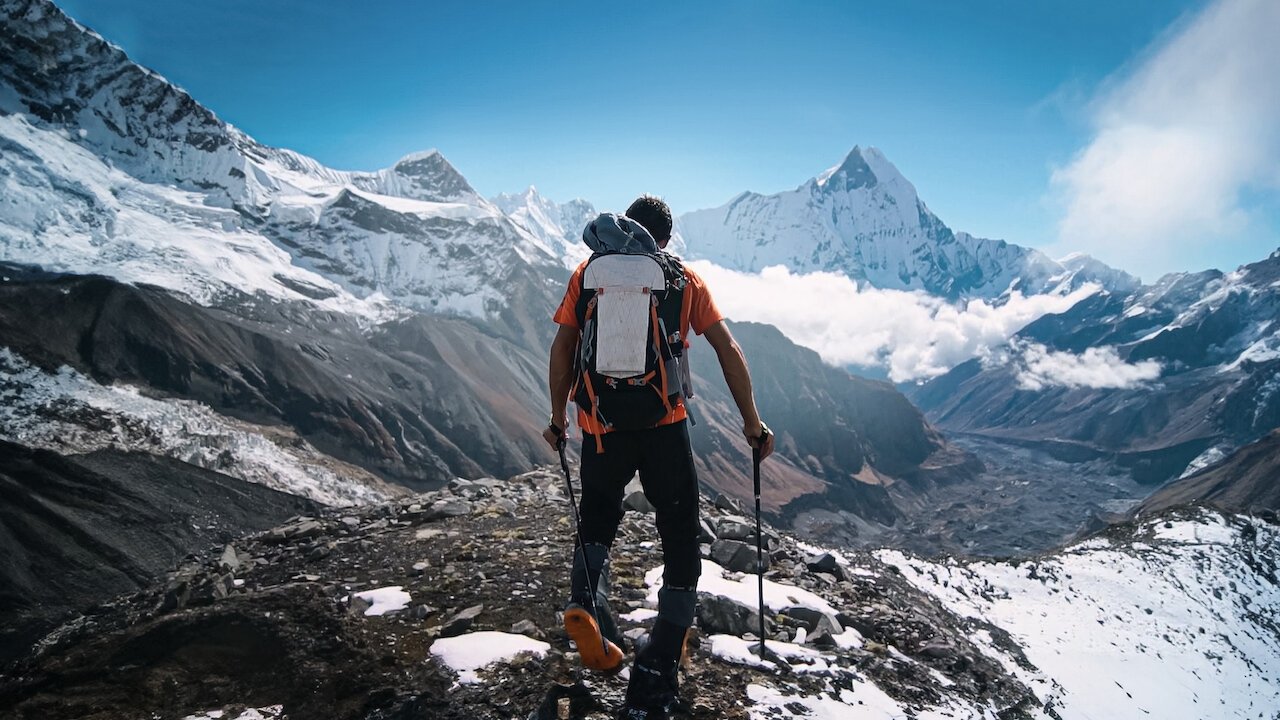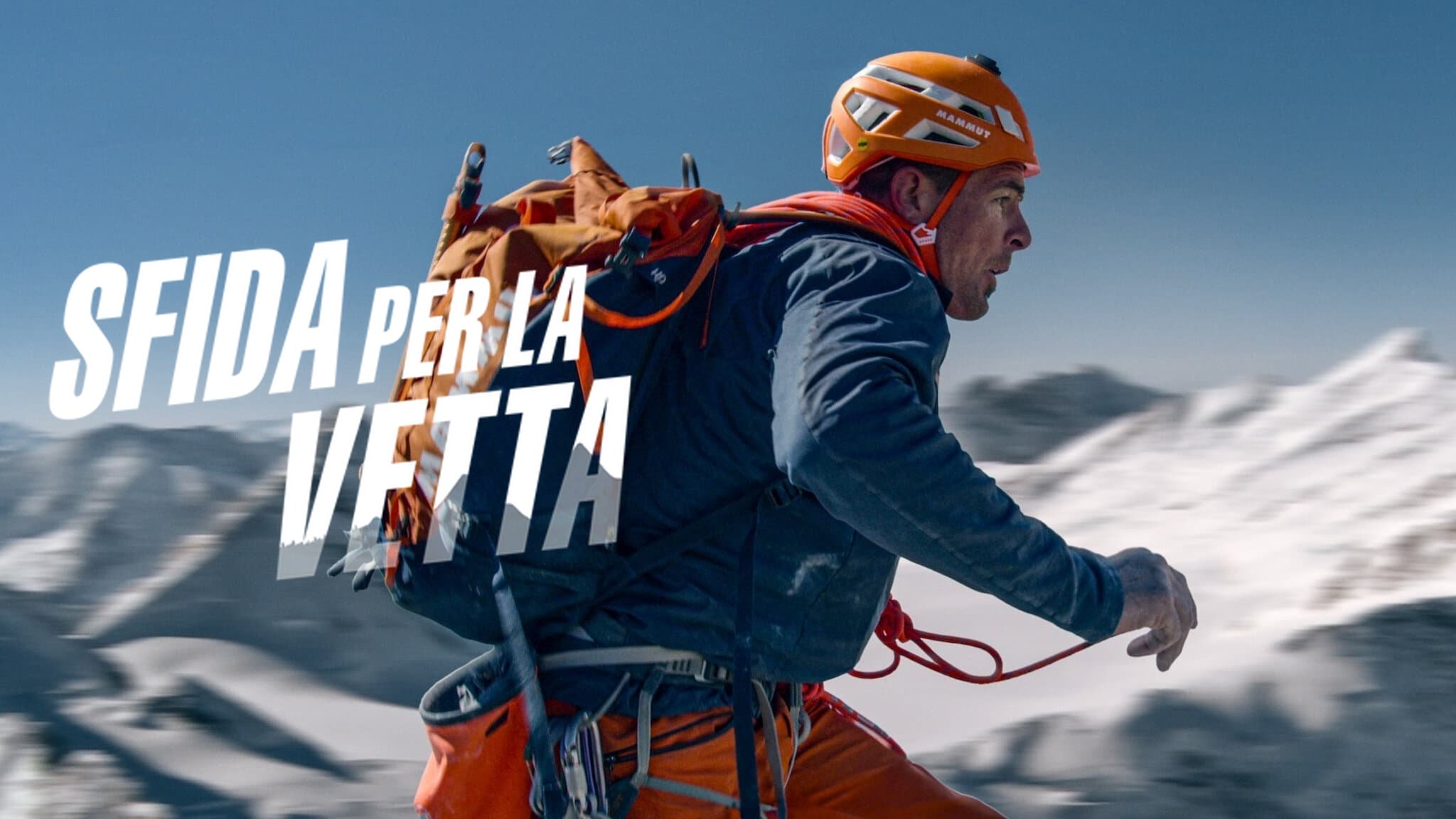Race to the Summit (2023)
Race to the Summit
IMDb 6.8
The winner of two Piolet d'Or awards, Ueli Steck, became popular for climbing the North Face of the Eiger at a record speed of 3 hours and 54 minutes in 2007, and he eventually broke his record the next year by climbing it in 2 hours, 47 minutes, and 33 seconds. Ueli is Swiss. Ueli was more interested in the sports aspect of climbing and not the adventure aspect of it. Ueli wanted to climb the trilogy of Alpine North Faces in record time.This marked the beginning of Steck's speed-climbing career. He immediately became a media sensation and was considered one of the best Alpinists of all time. Ueli gave birth to modern-style Alpinism, which essentially involved risking his life for the climb. He did not use ropes and solely depended on the grip of his hands and shoes to climb the mountains. Even when the routes were difficult, Ueli always chose to stick to his extreme style of climbing solo and without a harness.Fellow mountain climbers discuss how Ueli Steck was all about discipline and motivation. He is remembered for being extremely hardworking, and he meticulously planned every climb of his. Ueli admitted that he was not a natural athlete, and therefore, to achieve his goals, he had to work extra hard. He trained rigorously, and once he started to climb, he never turned back. For Ueli, mountain climbing was not an adventure he enjoyed; instead, he treated the entire ordeal as a sport where timing and goal were absolutely crucial. Ueli brings the modern style to Alpinism.The high that he experienced in 2008 made him crave success all the more. He needed to prove himself over and over again, which meant he had to climb more and more mountains.Ueli enjoyed the media attention he received, and he never said no to sponsorship. He paved the path to making a living through mountain climbing, and he was particularly successful in doing so because he had the capability of appealing to a larger crowd. Even though the general audience might not get all of the mountain climbing jargon, they were familiar with speed, time, and the entire sports aspect of it. Ueli eventually managed to climb the remaining two famous north faces of Matterhorn and Grandes Jorasses at record speed as well. By bringing in time, Ueli Steck had unknowingly called for competition. Once a record is set, it is natural for someone else to try to break it. To stay relevant, he had to continue climbing and setting more records, and while he enjoyed every bit of speed climbing, maybe certain things are not meant for competitions, especially if they are life-threatening.Dani Arnold trained to become a mountain guide during his free time. He took an interest in climbing from a young age, and Ueli Steck was an inspiration for him. Steck made him believe that it was possible to earn a living through mountaineering. Dani Arnold followed Steck closely to understand his style, and once he felt confident in himself, he decided to climb the north face of Eiger. Dani knew he was taking on a herculean challenge, but he believed he was ready for it. Climbs that took hours, he could complete in a short span.Dani stated that once he started to climb Eiger, he felt comfortable and did not face trouble increasing his speed. Dani Arnold ended up breaking Ueli Steck's record and setting a new one-two hours and twenty-eight minutes. Dani Arnold kept a low profile, and it was almost unexpected for him to break Steck's record. Soon after reaching the summit, Arnold texted Steck because he believed he deserved to be the first one to know about it. But Ueli Steck did not take the competition well. Ueli was the complete opposite of Dani. Ueli trained hard and was very methodical. Dani was very unorganized but was naturally gifted.The rivalry began when Dani came across a newspaper interview where Ueli belittled his achievement by pointing out that Dani had used a rope during the climb. He went so far as to accuse Dani of cheating, and it showed how insecure he felt at the time. According to Ueli, he was the one who created the idea of a pure climb, and he tried to use it as a differentiating factor between him and his competitor. Dani felt the need to prove himself after the media started to question his achievements as well. He did wish to be taken lightly, and it became important for him to prove to the world that he was worth watching out for.After the Swiss Alps, Ueli Steck shifted his focus to the Himalayas. He was searching for something more challenging, and the south face of Annapurna was perfect for his project since it was extremely dangerous. Even though the climb was severely demanding, Ueli was impossible to stop. Annapurna had a 1:3 death to Summit rate. The rockfalls and the avalanches on the mountain were constant and deadly. It was assumed that Ueli would stop climbing after strong winds started to blow, creating avalanches all across the face, but the next morning, when his team saw Ueli return to the base, it became obvious to them that he did not stop and made it to the summit. Ueli's Annapurna climb became a point of debate since he did not have a single picture taken on the summit. People demanded proof, but there was none. Ueli admitted that he should have carried proof, but then again, several more important things were going through his mind, and safely making it back to the base was the dominating one. While many believe he indeed made it to the top, some argue that it might be untrue. People were left wondering if the media was responsible for pushing Ueli Steck to the point where he had to lie to prove himself.Meanwhile, the media got to Dani Arnold as well after his achievement was repeatedly questioned. To prove himself, he climbed the north face of Matterhorn, and once again, he broke Ueli's record of 1 hours and 56 minutes, by 10 minutes. Ueli Steck did not comment on his achievement, but the rivalry became obvious to the world when Steck announced that he would speed-climb the North Face of Eiger again. He won back the title of the fastest climb on the North Face of the Eiger by six minutes. The rivalry had turned bitter and petty by then. A competition that could result in death must technically not be celebrated, but that was exactly what was going on. It was either winning or dying at that point. Dani's parents believe that social media plays a huge role in affecting mountaineers. The need for validation has reached an extreme level.Ueli admitted that, as a thirty-eight-year-old, it was not easy for him to accept that he was past his best achievements. He needed to challenge himself over and over again. Ueli Steck died during the Nuptse climb in the Himalayas. He slipped and succumbed to a thousand-meter fall. His body was buried in Kathmandu, Nepal, and a memorial service was held in Switzerland. Ueli Steck was aware of how fatal his style was, and people close to him believed that he was having the time of his life during his last climb. Ueli believed in grand living instead of always playing it safe. Dani Arnold continues to speed climb all across the globe, and Ueli's death shows him how things could end for him. He hopes that he will be able to stop himself at the right time if the circumstances ever turn unfavorable. Dani went on to break Ueli's record once again. He had climbed the north face of Grandes Jorasses in the recorded time of approximately 2 hours and 4 minutes, beating Ueli's record by 17 minutes.The trend of making records in mountain climbing could result in many more deaths. The need for validation and media attention plays a huge role, but then again, it has gone too far to be stopped now. There will be others aiming to break the records that have been set. It all comes down to whether one wants to take in the pure joy of climbing a mountain or even the sport aspect of it or would risk their life primarily for fame and money. Dani admits that it is just a sport, and as difficult as it was for him to accept, it is obvious that someday someone will break his records, and that is the nature of the sport.
Details :
name :
Race to the Summit
MPA rating :
Release Date :
Oct 4th 23
Runtime :
90 min
Language :
de
Genres :
Action , Adventure , Documentary , Sport
Cast :
Alex Honnold
Ueli Steck
Dani Arnold
Dani Arnold
Storyline
The winner of two Piolet d'Or awards, Ueli Steck, became popular for climbing the North Face of the Eiger at a record speed of 3 hours and 54 minutes in 2007, and he eventually broke his record the next year by climbing it in 2 hours, 47 minutes, and 33 seconds. Ueli is Swiss. Ueli was more interested in the sports aspect of climbing and not the adventure aspect of it. Ueli wanted to climb the trilogy of Alpine North Faces in record time.This marked the beginning of Steck's speed-climbing career. He immediately became a media sensation and was considered one of the best Alpinists of all time. Ueli gave birth to modern-style Alpinism, which essentially involved risking his life for the climb. He did not use ropes and solely depended on the grip of his hands and shoes to climb the mountains. Even when the routes were difficult, Ueli always chose to stick to his extreme style of climbing solo and without a harness.Fellow mountain climbers discuss how Ueli Steck was all about discipline and motivation. He is remembered for being extremely hardworking, and he meticulously planned every climb of his. Ueli admitted that he was not a natural athlete, and therefore, to achieve his goals, he had to work extra hard. He trained rigorously, and once he started to climb, he never turned back. For Ueli, mountain climbing was not an adventure he enjoyed; instead, he treated the entire ordeal as a sport where timing and goal were absolutely crucial. Ueli brings the modern style to Alpinism.The high that he experienced in 2008 made him crave success all the more. He needed to prove himself over and over again, which meant he had to climb more and more mountains.Ueli enjoyed the media attention he received, and he never said no to sponsorship. He paved the path to making a living through mountain climbing, and he was particularly successful in doing so because he had the capability of appealing to a larger crowd. Even though the general audience might not get all of the mountain climbing jargon, they were familiar with speed, time, and the entire sports aspect of it. Ueli eventually managed to climb the remaining two famous north faces of Matterhorn and Grandes Jorasses at record speed as well. By bringing in time, Ueli Steck had unknowingly called for competition. Once a record is set, it is natural for someone else to try to break it. To stay relevant, he had to continue climbing and setting more records, and while he enjoyed every bit of speed climbing, maybe certain things are not meant for competitions, especially if they are life-threatening.Dani Arnold trained to become a mountain guide during his free time. He took an interest in climbing from a young age, and Ueli Steck was an inspiration for him. Steck made him believe that it was possible to earn a living through mountaineering. Dani Arnold followed Steck closely to understand his style, and once he felt confident in himself, he decided to climb the north face of Eiger. Dani knew he was taking on a herculean challenge, but he believed he was ready for it. Climbs that took hours, he could complete in a short span.Dani stated that once he started to climb Eiger, he felt comfortable and did not face trouble increasing his speed. Dani Arnold ended up breaking Ueli Steck's record and setting a new one-two hours and twenty-eight minutes. Dani Arnold kept a low profile, and it was almost unexpected for him to break Steck's record. Soon after reaching the summit, Arnold texted Steck because he believed he deserved to be the first one to know about it. But Ueli Steck did not take the competition well. Ueli was the complete opposite of Dani. Ueli trained hard and was very methodical. Dani was very unorganized but was naturally gifted.The rivalry began when Dani came across a newspaper interview where Ueli belittled his achievement by pointing out that Dani had used a rope during the climb. He went so far as to accuse Dani of cheating, and it showed how insecure he felt at the time. According to Ueli, he was the one who created the idea of a pure climb, and he tried to use it as a differentiating factor between him and his competitor. Dani felt the need to prove himself after the media started to question his achievements as well. He did wish to be taken lightly, and it became important for him to prove to the world that he was worth watching out for.After the Swiss Alps, Ueli Steck shifted his focus to the Himalayas. He was searching for something more challenging, and the south face of Annapurna was perfect for his project since it was extremely dangerous. Even though the climb was severely demanding, Ueli was impossible to stop. Annapurna had a 1:3 death to Summit rate. The rockfalls and the avalanches on the mountain were constant and deadly. It was assumed that Ueli would stop climbing after strong winds started to blow, creating avalanches all across the face, but the next morning, when his team saw Ueli return to the base, it became obvious to them that he did not stop and made it to the summit. Ueli's Annapurna climb became a point of debate since he did not have a single picture taken on the summit. People demanded proof, but there was none. Ueli admitted that he should have carried proof, but then again, several more important things were going through his mind, and safely making it back to the base was the dominating one. While many believe he indeed made it to the top, some argue that it might be untrue. People were left wondering if the media was responsible for pushing Ueli Steck to the point where he had to lie to prove himself.Meanwhile, the media got to Dani Arnold as well after his achievement was repeatedly questioned. To prove himself, he climbed the north face of Matterhorn, and once again, he broke Ueli's record of 1 hours and 56 minutes, by 10 minutes. Ueli Steck did not comment on his achievement, but the rivalry became obvious to the world when Steck announced that he would speed-climb the North Face of Eiger again. He won back the title of the fastest climb on the North Face of the Eiger by six minutes. The rivalry had turned bitter and petty by then. A competition that could result in death must technically not be celebrated, but that was exactly what was going on. It was either winning or dying at that point. Dani's parents believe that social media plays a huge role in affecting mountaineers. The need for validation has reached an extreme level.Ueli admitted that, as a thirty-eight-year-old, it was not easy for him to accept that he was past his best achievements. He needed to challenge himself over and over again. Ueli Steck died during the Nuptse climb in the Himalayas. He slipped and succumbed to a thousand-meter fall. His body was buried in Kathmandu, Nepal, and a memorial service was held in Switzerland. Ueli Steck was aware of how fatal his style was, and people close to him believed that he was having the time of his life during his last climb. Ueli believed in grand living instead of always playing it safe. Dani Arnold continues to speed climb all across the globe, and Ueli's death shows him how things could end for him. He hopes that he will be able to stop himself at the right time if the circumstances ever turn unfavorable. Dani went on to break Ueli's record once again. He had climbed the north face of Grandes Jorasses in the recorded time of approximately 2 hours and 4 minutes, beating Ueli's record by 17 minutes.The trend of making records in mountain climbing could result in many more deaths. The need for validation and media attention plays a huge role, but then again, it has gone too far to be stopped now. There will be others aiming to break the records that have been set. It all comes down to whether one wants to take in the pure joy of climbing a mountain or even the sport aspect of it or would risk their life primarily for fame and money. Dani admits that it is just a sport, and as difficult as it was for him to accept, it is obvious that someday someone will break his records, and that is the nature of the sport.
Media




